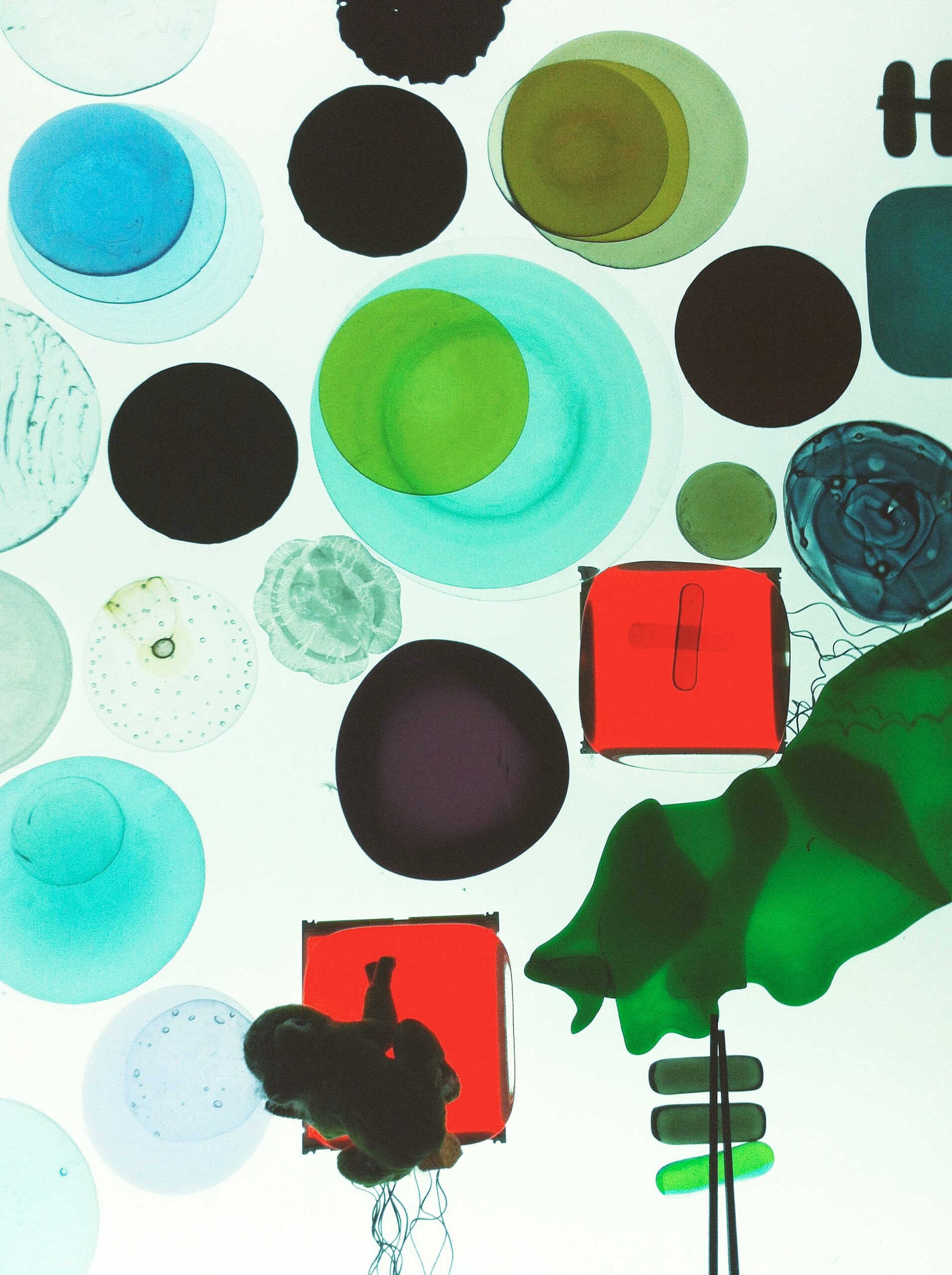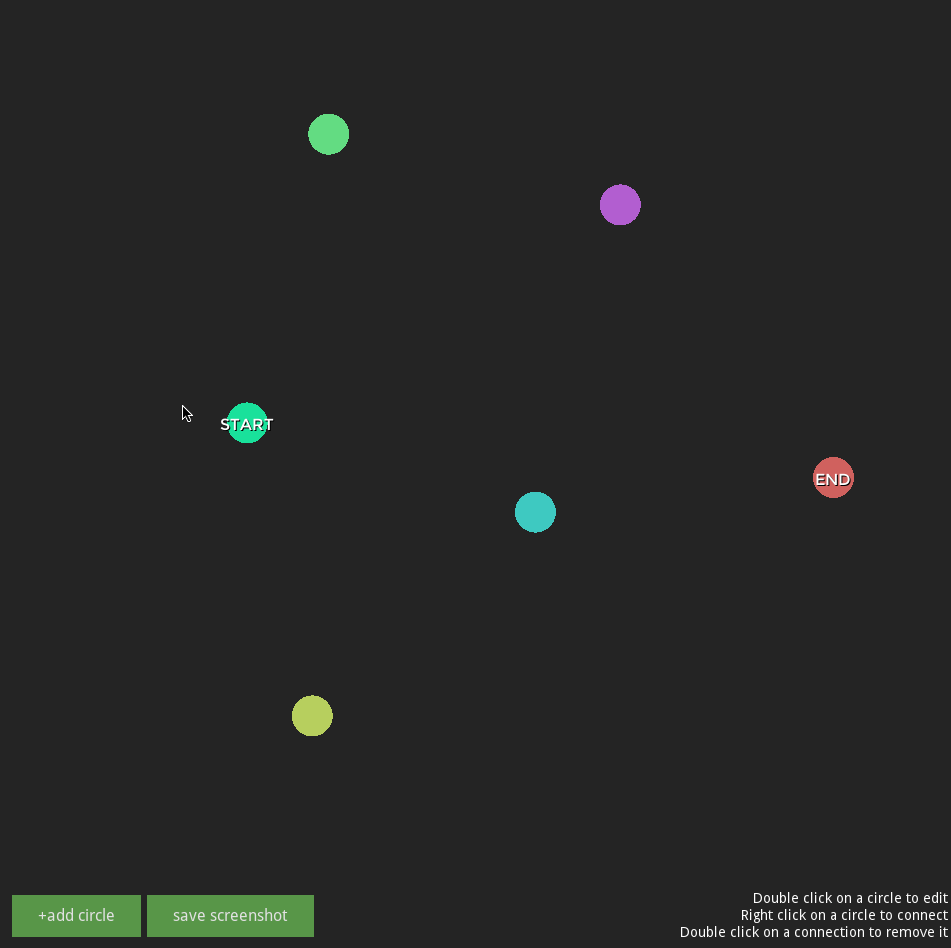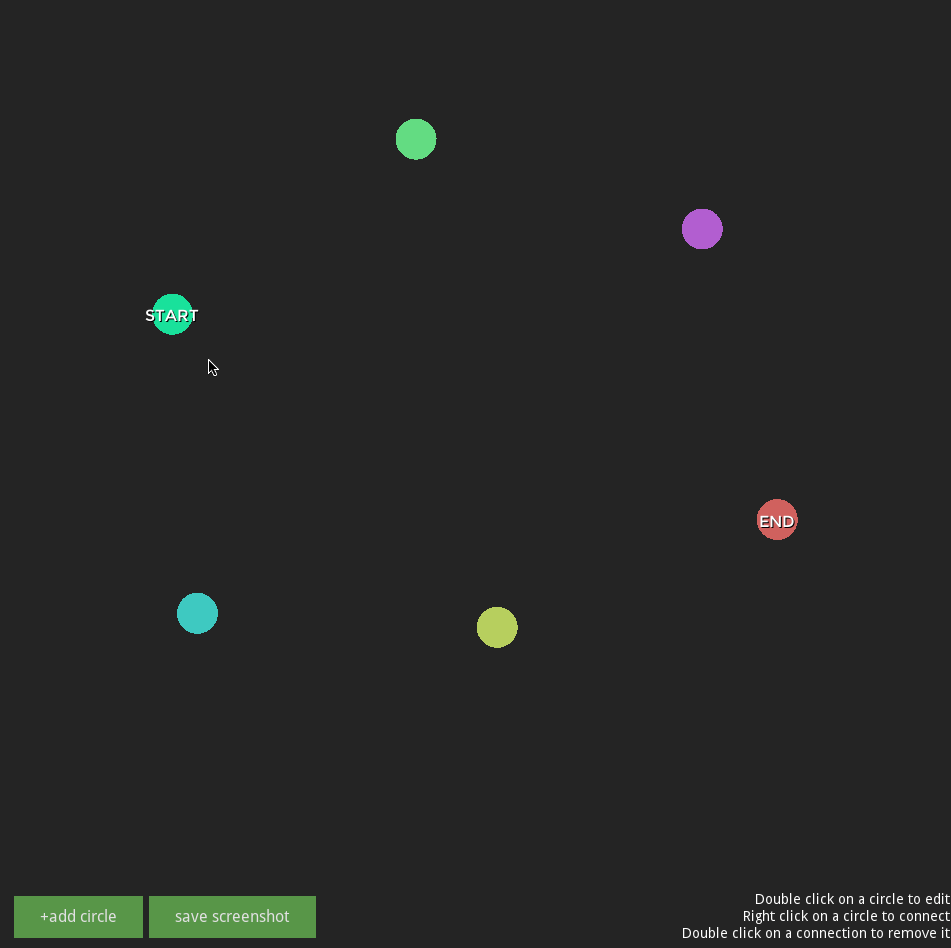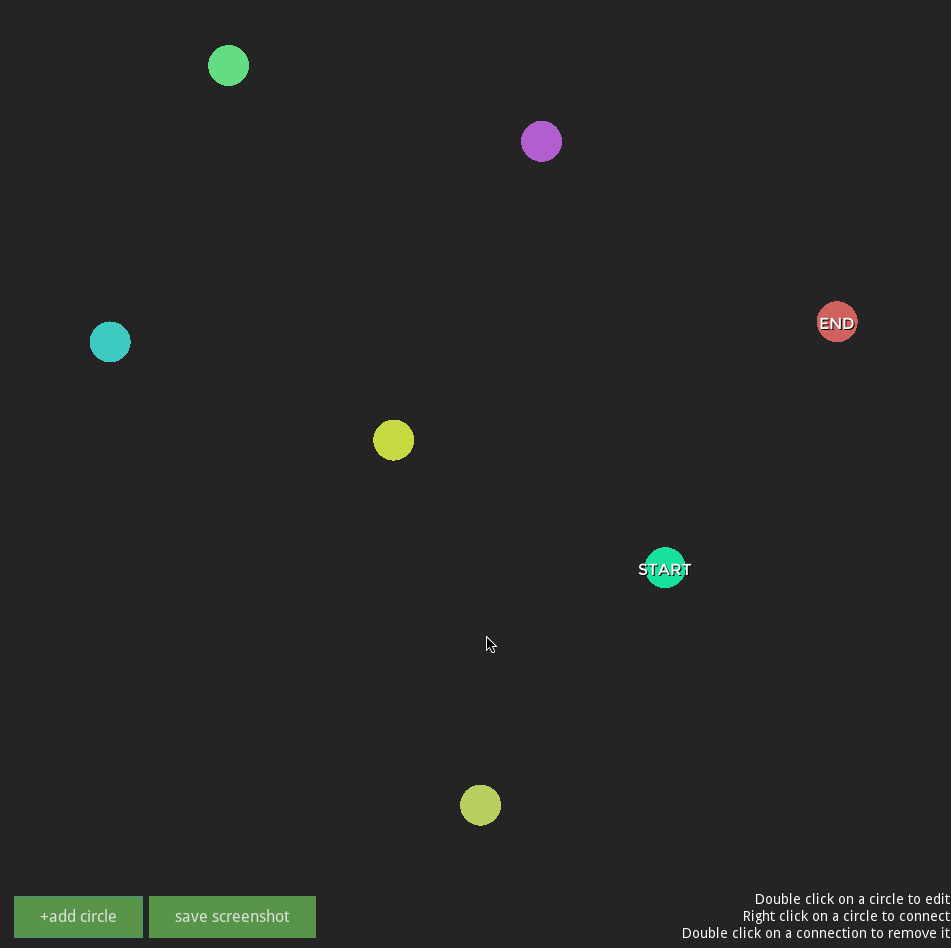🌟 Best of Show submission due date: November 1, 2021
✏️ For Students – This challenge gives you some practice in system thinking, a desirable skill when working with institutions and procedures.
💡 For Instructors – This exercise challenges you to map your domain knowledge beyond the weekly schedule, and create a visual artifact that can help students understand the bigger picture.

Explore the tool Bubbles
Use the button below to open the tool and explore some of its features. Refresh that page at any time to clear your drawing. Come back to this page when you are ready to start.

The challenge: Use the tool Bubbles to make shapes based on their description.
Some notes before you start:
- For most of the shapes you will need to define a Start and End circle. Do this by double clicking on the circle and then typing.
- Add circles using the +add circles button. Some of the shapes are a bit easier with more circles.
- Use the 👁 icon to see the answer after you have tried to make the shape on your own, OR use the answers as a guide while you work.
START HERE
〰 LINE
Description: Start and End circles are opposite each other. There is only 1 path from Start to End. No circle has more than 2 connections.
⭕️ CIRCLE
Description: Start and End nodes are opposite of each other. All paths must end at the End node or join a path that ends at the End node.
🎡 RADIAL
Description: The start circle has one connection to every other circle and each of those circles have only one connection to the start circle.
🌳 BRANCH
Description: Start and End circles are opposite of each other. There must be at least one path from the start to the end.
🗺 MAP
Description: Every circle is connected to its immediate neighbor. Start and End can be anywhere.
🌐 NETWORK
Description: Every circle is connected to every other circle, regardless of proximity.
Try creating a hybrid system
Most systems use a mix of the shapes above and others that aren’t listed. You can try to model something specific, or maybe just play in the tool and see what you come up with.
- By double clicking on the circle you can add:
- Scale: How big or small the circle is. What can size represent in a system graphic?
- Label: Text or numeric. What labels would be most helpful to a viewer?
- Once you complete your hybrid system use the “Screenshot” button in Bubbles to save an image of your system.
🥳 CONGRATULATIONS!
You’ve completed this challenge.
Each person takes a unique approach to this challenge. Share yours and see others.





